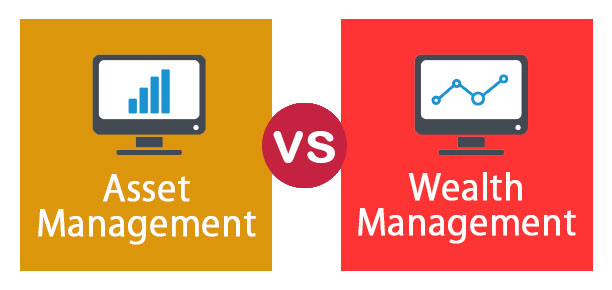You just learned how to use the Undeposited Funds account in QuickBooks Online, its importance, and when to use it. If you want other free resources to learn how to better use QuickBooks for your business, check out our free QuickBooks Online tutorials. For more detailed instructions, head to our tutorial on how to receive payments in QuickBooks Online. It’s good to periodically check your Undeposited Funds account and clear out any payments waiting to be moved. Here’s how to put payments into your Undeposited Funds account before you combine them.
Using Undeposited Funds in QuickBooks Online
The Undeposited Funds Account in QuickBooks is a temporary account holding payments that are planned to be deposited to the bank account later. It allows you to combine a number of payments into a single deposit if needed. Following the simple procedure described in this article, you’ll be able to make your reconciliation process smoother.
- It helps to reconcile any inconsistencies and prevent errors in financial reporting.
- From the Sales receipt form, you’ll need to provide the requested details.
- It is crucial to maintain a clear trail of documentation to support the deletion, such as notes detailing the reason for the adjustment and any approvals required.
- I am trying to clear up some items listed on my balance sheet has “undeposited funds”.
- In other words, with more experience the tasks are done quicker and easier.
- In this comprehensive guide, we’ll walk you through the process of cleaning up undeposited funds in QuickBooks Online, as well as how to clear, fix, get rid of, and delete undeposited funds.
Step 3: Match Deposits to Invoices and Payments
Here’s what you need to know about QuickBooks Online’s Undeposited Funds account to keep your business accounting operations running smoothly. Your Undeposited pcaob rulemaking Funds account should only contain items that are currently pending deposit. If you see old items, you need to investigate why they are still there.
Transparency is key, and any changes made should be well-documented and easily traceable. Let’s look at how to record sales receipts and deposit the money you receive in QuickBooks. When you select Create Sales Receipts, you see the Sales Receipt window. Most QuickBooks Online users find it easier to always post to the Undeposited Funds account first, and then enter the deposit into QuickBooks Online separately. Doing this does result in an additional step, but memorizing one way of recording payments is easier than having to remember multiple processes. In order for your financial statements to be accurate for the year, you need to record the payment as being received on Dec. 31.
Let’s look closer at what the Undeposited Funds Account in QuickBooks is. Now, when you check the Bank Register for your checking account, you can see the deposit posted for the correct amount. Our partners cannot pay us to guarantee favorable reviews of their products or services. However, if needed, you may rename it in your chart of accounts (COA). Additionally, you can add a description of the product or service, enter the quantity and rate, and add taxes if applicable. In the screenshot below, we have indicated the details of the A/C repair service rendered, including the rate which is $150.
Keeping the Undeposited Funds account accurate
All payments in the Undeposited Funds Account will automatically appear in the Bank Deposit window. The process described in the previous section repeats for as many sales receipts as needed. The payments you collect from the customers go to Undeposited Funds. Finally, you can see the number of payments in Undeposited Funds on the Record Deposits icon. For example, let’s say Willie’s Widgets paid you $300, Wally’s Whatsits bookkeeping for nonprofits scope of services foundation group® paid you $750 and Whitley’s Whosits paid you $200. However, you need to properly credit each customer for their payment.
If you run your own business or deal with accounting, you must have heard the name of the most popular accounting software for small businesses in 2023 according to Forbes Advisor-QuickBooks. Best known for its bookkeeping software, QuickBooks provides many other accounting and finance solutions that might help you run a business and even help you to run your personal finances. QuickBooks is highly scalable and adapting to the changing business needs. So when it comes to accounting software, QuickBooks can be named ubiquitous.
If there’s anything else that I can help you with aside from managing your bank transactions or any banking-related, please let me know in the comments below. I understand that you’re looking to clear out or correlation analysis deposit undeposited funds. Let me share some insights on how to clear it out and how undeposited funds work in QuickBooks Online. As it goes with all the software, there’s always a demanding learning curve. In other words, with more experience the tasks are done quicker and easier. So it makes sense to read or watch some tutorials when it comes to functions.
Try Process AI free
Select all the payments you will include in the deposit, making sure the amount you record in QuickBooks Online matches the amount on your bank deposit slip. Also, be sure you are posting the deposit to the correct account — in this case, checking — and that the date on the transaction is the date you will take the deposit to the bank. If you have checks to deposit that didn’t come through the normal invoicing and sales receipt process, you can add those checks in the Add funds to deposit section.
Unattended undeposited funds may lead to inaccurate financial reporting, which can have detrimental effects on decision-making and overall financial stability. After that, record a bank deposit so that you can combine the transactions from your Undeposited funds account and match them to your deposit in bank feeds. Once completed, the undeposited funds account balance should be zero. This account is special because it’s a temporary account that QuickBooks uses to hold received payments from invoices before you deposit them in the bank. Imagine this account as the blue bank deposit bag businesses use to hold cash/checks/etc before they deposit them at the bank. When you have your deposit slip, make a bank deposit in QuickBooks to combine payments in Undeposited Funds to match.




